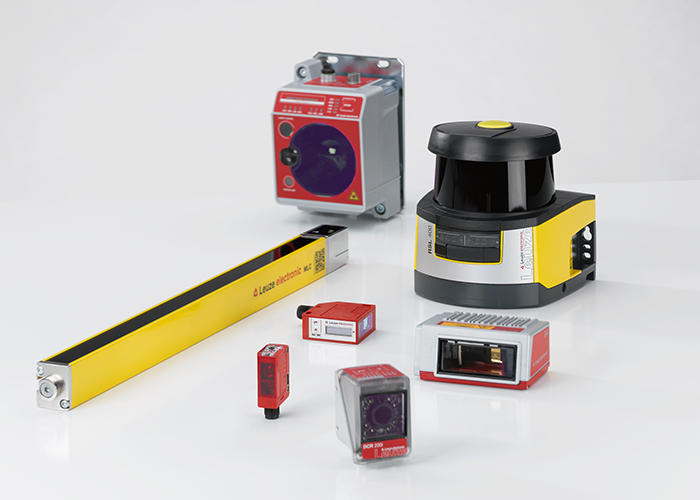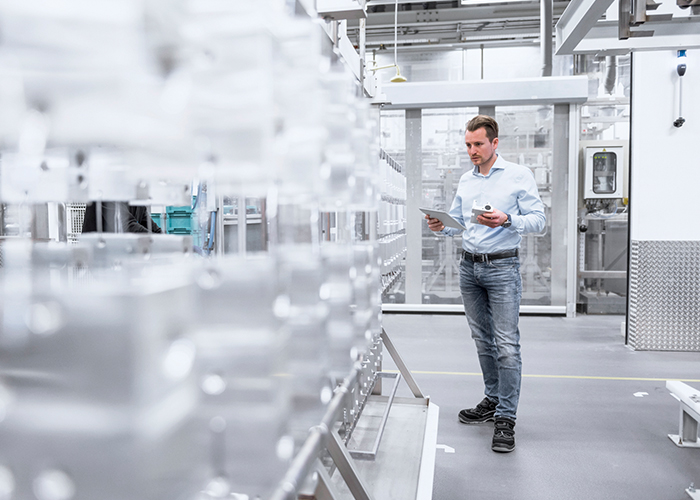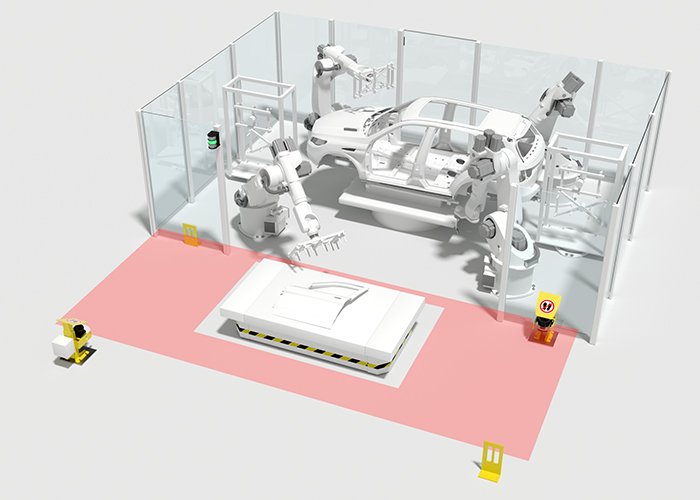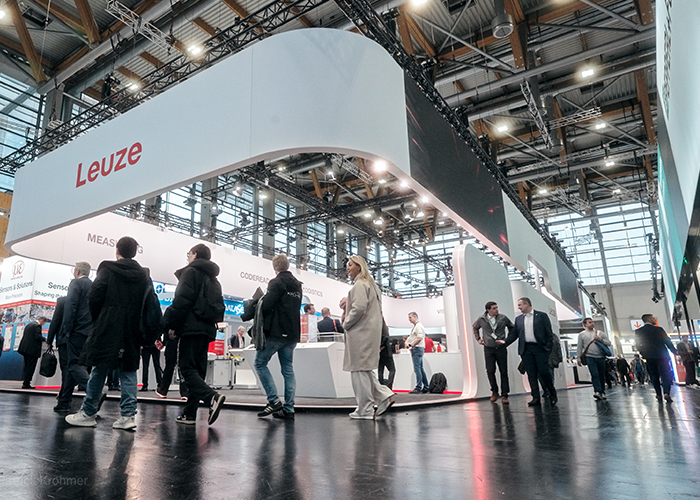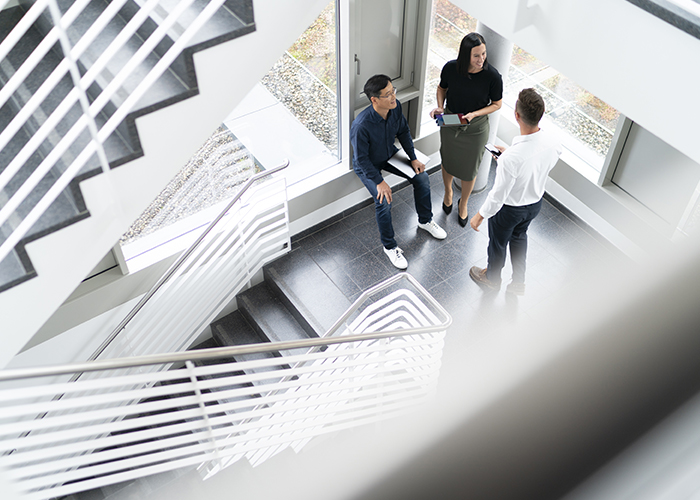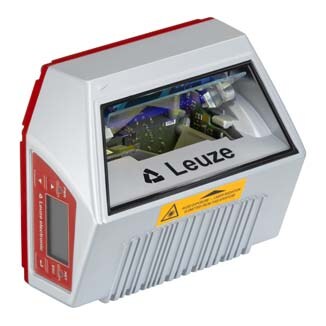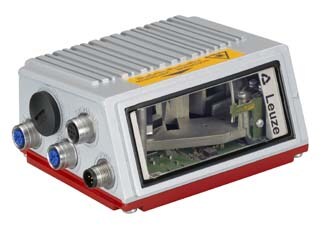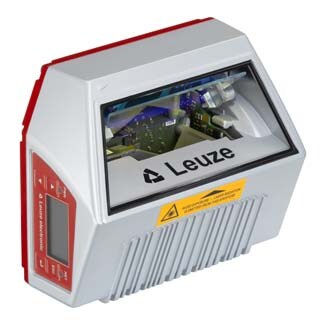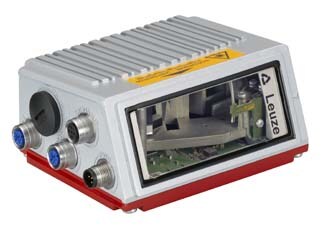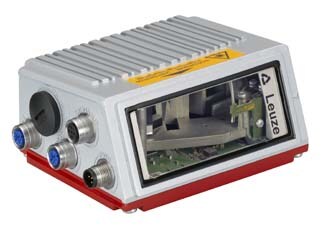Stationary 1D bar code readers
Bar code readers for a variety of identification tasks
Bar code readers cover an extensive range of applications in the areas of intralogistics and packaging. Our range of products, which spans form the basic bar code reader with optimum price/performance ratio to the high-end bar code reader with 1,000 scans/s, is accordingly diverse. In dialog with our customers, we continue to develop bar code solutions further. Our entire line of bar code readers offers a range of equipment features, such as extensive, integrated fieldbus connectivity, code reconstruction technology, modular connection options and an integrated switch.
Advantages for you
Parameterize right from your desk using integrated connectivity
Integrated system: The same device architecture for different requirements through a unified parameterization concept, uniform mounting options as well as integrated functionalities.
Longstanding Leuze Service: Reliable and fast project configuration as well as product selection through the global presence of the Leuze experts.
Added value 1: integrated connectivity
With bar code readers from Leuze, the most important interfaces are already integrated. We call that: integrated connectivity. This means that you can continue to use your existing control. Parameterization of the bar code readers takes place automatically during commissioning of the fieldbus.
| integrated connectivity means, ... | Your advantage |
| ...You work only in the control environment with which you are familiar. | No getting up to speed with a different software system. |
| ... You perform the parameterization right from your desk | It is not necessary to physically go the system facilities with technical equipment. |
| ... You mount just the sensors and, thus, up to 50% fewer devices. | No installation of additional gateways or connection boxes necessary. |



Added value no. 2: Consistent bar code reader product range
The same device architecture for different requirements
All bar code readers have similar functionality. The parameterization of all devices is performed using a unified concept and identical processes, independent of the product model.
Faster and more reliable commissioning for applications
- Simple project configuration
- The same mounting options
- All models also available for low-temperature applications
Added value 3: Service - there for you always and everywhere
Our pre- and after-sales service advises you in all phases of the project. Reliable and fast project configuration as well as product selection is guaranteed through the global presence of intralogistics experts.
- You supply the data, we supply the know-how
- Extensive experience for the perfect installation position of the bar code readers
- Detailed bar code analysis for the highest reading rates of the system
- Fast help for high system availability and system safety

Our service concept for you
| 1. Gather requirements and define the solution | ||
|
|
| |
| 2. Mounting diagrams for the optimum position | ||
|
|
| |
| 3. Detailed bar code analysis | ||
|
|
| |
| 4. Commissioning and after-sales | ||
|
|
|
Highlights
Bar code readers with a variety of equipment features



High system availability through perfect reading reliability
Successful detection of codes on partially destroyed, soiled or rotated bar code labels, even at a large angle of inclination, is possible thanks to the code reconstruction technology. Our code reconstruction technology functions so that the entire code can be reconstructed from individual, undamaged sections of code.
Reliable reading of bar codes with poor contrast
All our bar code readers operate with a scanning rate of 800-1000 scans/sec. After every scan, the electronics, such as filters and amplifiers, are adapted to the reception signal (adaptive signal adjustment). The contrast between bar and gap is thereby optimized.
Heated bar code reader product range
Through the integrated heating in the entire bar code reader product range, the electronics function reliably down to -35 degrees Celsius. This ensures that the optics do not fog or ice over.



This is the foundation for the digital transformation of your intralogistics
The Leuze BCL 348i bar code reader is certified in accordance with OPC UA. Standardized data exchange occurs across all levels of the automation pyramid all the way to the cloud. This ensures a fast connection with dashboards and other applications. The sensor data is then evaluated at the press of a button.
Faster alignment, commissioning and troubleshooting.
Bar code readers from Leuze have an optional display, where reading results and reading quality are displayed directly on site. This allows a more efficient and exact alignment.
Fast and comfortable commissioning
The MAC address is provided as a removable stick-on label (Address Link Label) on each scanner. This label can easily be affixed to the circuit diagram. No complex assignment of the MAC addresses to the scanners during commissioning.



No additional trigger photoelectric sensors necessary
Thanks to the autoReflAct function from Leuze, the bar code reader can also be activated without any external switching signal.
Fewer erroneous readings under extreme application scenarios
Reliable code reading is ensured even at extremely acute angles. This is made possible by specially developed optics and analog electronics as well as high function reserve. At minimum distance between the reader and the bar code, so-called zero distance, codes are also reliably detected.
Higher performance without special communication architecture
Several bar code readers can be easily connected and output a common decoding result. This eliminates the need for the host to process a no-read result, thereby ensuring improved performance. Bar code readers from Leuze use the existing Ethernet network as the communication layer. No separate communication architecture needs to be established for this purpose.
Know-how
How can you maintain your plant availability even with damaged or poorly printed bar codes?
This question is answered in our "bar code reader talk".
What advantages does a high function reserve offer in the context of bar code reader? When does the function reserve come into play?
We answer this question in our "Bar Code Reader Talk" with our intralogistics experts.
What is a simple way of constructing a line structure using bar code readers? What are the advantages of this compared with a star topology?
These questions are answered in the "bar code reader talk".
In container handling technology, does a bar code reader now output only "no reads"? How can fast troubleshooting and simple device exchange be performed without specialist knowledge?
We will answer these questions for you in the fourth part of our video series "Bar Code Reader Talk."
Guided container and tray identification made easy

Sven-Philipp Abraham
Product Manager Identification Systems at Leuze
Interview
As an expert in the field of identification, Leuze has been producing bar code readers since the 1990s. The company has continuously developed the product portfolio in this sector. The bar code readers meet numerous intralogistics requirements and are thus suitable for a wide range of applications. With our new BCL 200i stationary bar code reader, we are introducing a new product from our BCL series. It supports guided container and tray identification and is especially suited to tight installation spaces on the conveyor line.
Where will 1D bar codes suffice?
1D-bar codes are typically used in applications where a label with 10 to 20 characters is sufficient. Furthermore, sufficient space must be available for a label, on a transport container, for example.
What advantages do they offer compared to 2D bar codes?
In the past, 1D bar codes had advantages due to the printing technology. Nowadays, the advantages of 1D bar codes are almost non existent. 1D-bar codes can be detected by most code readers available on the market.
Is there anything to be aware of in terms of detection?
When detecting codes with 1D bar code readers, one has to pay attention to a few key points during the configuration and design of the 1D bar code. The correct distance or alignment of the code in picket-fence or ladder arrangement are just two examples. In the design of 1D bar codes, the modulus width, meaning the narrowest width of the black bars, has a considerable influence on the selection of the right code reader. Basically, the bar code must fit in the guaranteed reading field of the code reader.


Which 1D bar code readers does Leuze offer?
Leuze offers a very wide range, including for the packaging industry and intralogistics. Depending on the application, the series
BCL 92, BCL 200i/300i, BCL 500i/600i or BCL 900i are in use here.
What distinguishes them?
The code readers are optimized for various applications. For example, BCL 92 is suited to the labeler area; BCL 200i/300i for the broad scope of tasks for container and tray conveyor systems; BCL 500i/600i/900i for pallet and carton identification.
Downloads
Article list
- Series: BCL 600i
- Interface: EtherNet IP
- Functions: Code fragment technology, Alignment mode, AutoConf...
- Series: BCL 600i
- Interface: EtherNet IP
- Functions: Alignment mode, AutoConfig, AutoControl, AutoReflA...
- Series: BCL 600i
- Interface: EtherNet IP
- Functions: Code fragment technology, Alignment mode, AutoConf...
- Series: BCL 600i
- Interface: EtherNet IP
- Functions: Reference code comparison, Alignment mode, AutoCon...
- Series: BCL 600i
- Interface: EtherNet IP
- Functions: AutoControl, Alignment mode, AutoConfig, AutoReflA...
- Series: BCL 600i
- Interface: EtherNet IP
- Functions: Reference code comparison, Alignment mode, AutoCon...
- Series: BCL 600i
- Interface: EtherNet IP
- Functions: LED indicator, Alignment mode, AutoConfig, AutoCon...
- Series: BCL 600i
- Interface: EtherNet IP
- Functions: Alignment mode, AutoConfig, AutoControl, AutoReflA...
- Series: BCL 600i
- Interface: PROFINET
- Functions: LED indicator, Alignment mode, AutoConfig, AutoCon...
- Series: BCL 600i
- Interface: PROFINET
- Functions: LED indicator, Alignment mode, AutoConfig, AutoCon...
- Series: BCL 600i
- Interface: RS 485
- Functions: Reference code comparison, Alignment mode, AutoCon...
- Series: BCL 600i
- Interface: RS 485
- Functions: AutoConfig, Alignment mode, AutoControl, AutoReflA...

